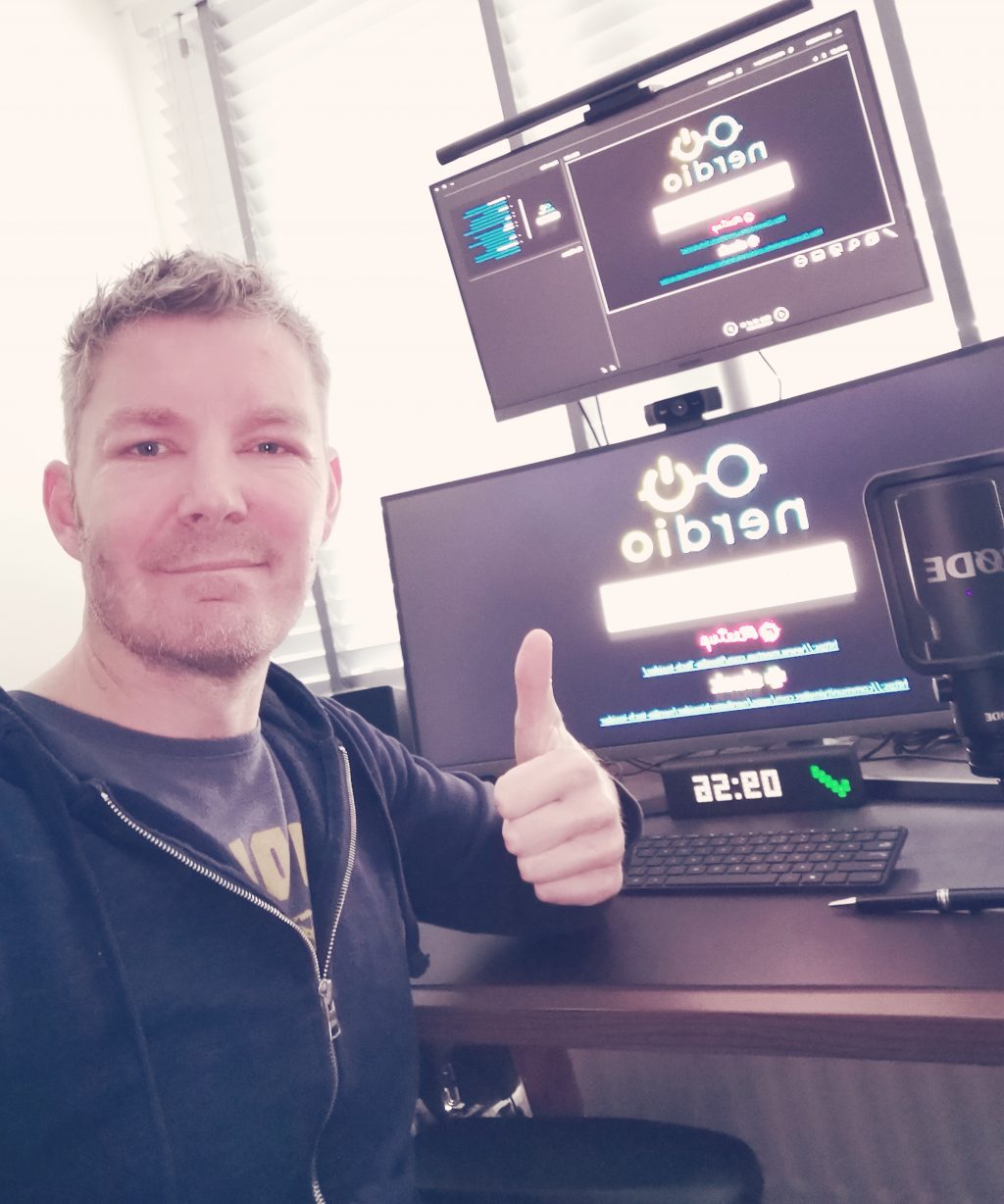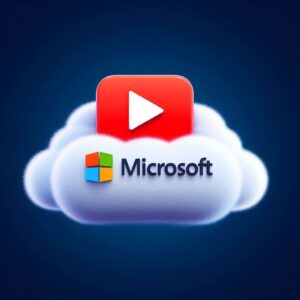Bas van Kaam Interview

Bas van Kaam from the Netherlands near Amsterdam is a MVP (Microsoft Most Valued Professional) and employed as an EMEA Field CTO with company Nerdio. Over his IT career, he has achieved an impressive 60 plus certifications and continues to focus on gaining further certifications, recently achieving his Azure Architect Expert certification.
Bas is heavily involved with Windows Virtual Desktop and is known as one of the senior members within the WVD Community. It doesn’t stop there, Bas is also involved with several user groups which he provides further information on within his interview. He has presented multiple sessions on WVD and written a large number of blog posts, whitepapers, and so-called cheat sheets on the topic that you may come across while performing your Google searches.
Those who follow Bas on the various social media platforms will describe Bas as one of those guys who sits in the centre of the WVD Community with a massive passion for all things WVD, always willing to help and looking for ways to grow the community.
We took the opportunity to focus this interview around Windows Virtual Desktop (WVD) and really appreciate Bas taking the time to share his experience. His passion for WVD pours out of this interview as you will gather shortly.
Note: If you have any questions or feedback, please use the comment box towards the end of the interview. All comments are reviewed before we approve and notify the interviewee. Thanks
Bas van Kaam Interview
Tell us about yourself?
My name is Bas van Kaam and I am based in the Netherlands, near Amsterdam. I have been in IT for over 20 years and I currently hold the position of EMEA Field CTO with Nerdio. I am a father of three who loves spending time with his kids and girlfriend (we are getting married next year, it’s because of her I am able to do the things I do and love). I’m also a big sports fan and love to go out for a run 4 to 5 times per week. Furthermore, what can I say? Work is hobby and vice versa – I’m a lucky man!
What is your greatest achievement whilst working in the world of Tech?
My growth as a person overall. Overcoming fears, like public speaking enabling me to advance my career is a good example. Acknowledging my weaknesses and strengths and use them to my advantage, knowing when to step up or when to back down and leave others to it. But also, the various communities I’ve (helped) built, that I am, or have been part of throughout the years, together with my current role and achievements at Nerdio are high on my list as well.
How did you get into IT?
Like many, I started out with a Commodore 64. However, it did not trigger my interest in IT per se. That came years later when I met my first (now ex) wife. Back then my father and brother-in-law both worked with computers extensively, something I found very interesting and appealing. At one point my brother-in-law (he worked for a Dutch IT firm) started to teach me a thing or two about windows (95/98). Around that time, I bought my first personal computer and my quest for IT knowledge began. Playing games, organizing LAN parties in my dad’s garage, getting to know the Internet, putting together PC’s, getting a job as a helpdesk technician, and the rest is history…
What would you recommend for someone wanting to start a career in IT?
Be persistent, keep at it, and do not give up! That’s it. By the way, it doesn’t matter what you want to become successful in… life, friends, family, being a dad, a husband, a friend, your professional career, sports, writing, learning, you name it, being persistent is the most important thing. Learn from your mistakes. And while pushing, make sure to take breaks and keep an eye on your health as well, however tempting it may seem to keep going.
What certifications have you achieved, or the certifications you are working towards?
All of them basically. I did almost all MCSE tracks from 2003 and upwards, including dozens of other IT related exams throughout the years (more than 60 at this point). I’m now an Azure Enterprise Architect (achieved about two months ago), and I did various AWS exams as well. I also focused on the business side of things while doing a three-month Cloud Masterclass late 2019. Cisco CCNA, multiple CompTIA certifications, a lot of Citrix certs, VMWare, RES, Prince 2, Togaf, Scrum ASF, ITIL V2 & 3, and more, are on my resume as well.
Could you explain a little about Windows Virtual Desktop? What is WVD? And what are the benefits?
In a nutshell… Windows Virtual Desktop enables you to offer virtualized desktops and applications to your users in various ways. Potential scenarios include single user VDI type workloads in a one-to-one relation, multiuser environments based on the well-known Hosted Shared Desktop concept or published applications (without a desktop) are optional as well. Both persistent and non-persistent are supported. The infrastructure needed to run the WVD service is hosted and managed by Microsoft and is available on the Azure Cloud exclusively (it is not available on any other Cloud or on-premises). Components include: the brokering and load balancing service, database, gateway, and web access – these services make up the actual WVD service. Customers still have to take care of their applications, data, images, patching, networking, authentication, authorization, and those types of things. As part of the WVD service Microsoft also offers Windows 10 multi-session together with (extended) support for Windows 7, Server 2012, 2016, 2019, and onwards. Windows Virtual Desktop is optimized for Office 365 usage, including Outlook, Teams, and other applications.
Could one compare WVD to Citrix? Can WVD offer customers what Citrix offers?
Native WVD? No. Native WVD Combined with Nerdio, yes. In 70% of all cases, give or take. It is what I / we see daily. Do we think of ourselves as a direct competitor to Citrix? No. However, our customers often think otherwise even before we talk to them, and to be honest I can see why that is – from both a feature and cost perspective. Throughout the last 20 years we have had RDS with Citrix on top, today it’s WVD with Nerdio on top, at least that’s what I always say. Does that mean that WVD always wins? No, of course it doesn’t.
What are your favorite features of WVD and what features does WVD lack today which may be available in the future?
To be honest, my favorite thing (and it is not a feature) about WVD, by far is the fact that Microsoft is giving it so much attention. Companies from all over the globe are suddenly interested in DaaS, RDSH, and VDI type solutions – as if they came up with completely new. It’s hot and happening, as they say. The impact of all this is huge, and that is a good thing. Furthermore, I like its distributed nature and the fact that we do not have to worry about the underlying infrastructure. However, features like Single sign-on, full Azure Active Directory support, and such would be welcomed by many. Of course, there’s a whole list of things missing depending on who you talk to. Overall management and optimizing WVD isn’t straightforward, no matter how excellent your PowerShell and / or DevOps skills are. The native Azure portal keeps changing and most don’t prefer it as their main management interface. Next to that there are dozens of features and functions I can think of that make the life of an WVD admin more pleasant. Though, that’s also one of the main reasons why Microsoft depends on partners like Nerdio to fill the gap. A win-win situation for both.
As you are aware, there is a limit for sys prepping a base image. What do you recommend as a work around for the sysprep limit?
Use Nerdio. But seriously, we automate just about everything you can think of around WVD, from basic tasks to complicated infrastructural matters, and we integrate with numerous other native Azure services. Image management is no exception and the sysprep limit (is it 8 times?) is something we easily bypass without the WVD admin noticing a thing (we hide all of the complexity for you). Want to update, and thus sysprep (which we will do for you btw, including sealing the image and such) an image 1000 times in a row, go right ahead there’s nothing stopping you – it will just work.
When planning a WVD solution what should one look out for?
Networking (latency) and keeping your applications and data close to your users. Preferably on Azure as well. Keep an eye on printing also, we are far from paperless offices still, if we ever will be. Virtual machine and user profile sizing can be tricky as well. Don’t depend on general guidelines. Stand up a PoC environment and test. Remember, sizing virtual machines and FSLogix profile containers, for example is application / workload specific and will differ per environment, including the types of users (office, power, typical, etc) you have to deal with. Give your use case some thought, what makes the most sense? Single user, persistent, or non-persistent, multi-user perhaps, making more efficient use of resources. As always, all have pros and cons and there is no silver bullet. There is more to take into consideration, but these are a few of the bigger items.
How would someone get started with trying out WVD today?
Just do it. Go to the Azure portal, search for Windows Virtual Desktop, and give it a spin. There is a ton of documentation available. Try it out for a few weeks, then sign up for a Nerdio trial, do it all again, and let us know what you think. Do we make your WVD admin life easier compared to the native portal? More efficient and less time consuming? Do we help you save on costs and resources, adding additional features and functionalities on top of native WVD? You can be the judge of that. And please, be honest.
How did you get into the world of Microsoft Windows Virtual Desktop?
I always keep, and kept an eye on new developments, that’s how I noticed WVD as well. Though, to be honest, this one was hard to miss.
How do you keep up to date with the latest Windows Virtual Desktop updates? With this product being recent, there must be updates being released often?
Yes, WVD is under constant development and new features and functionalities are being added almost weekly. Microsoft is definitely doing a great job at that. Go and follow the WVD Community on Twitter (@wvdcommunity), join their Slack channel, check out their website, and you’ll be all set.
We noticed that you work at Nerdio (GetNerdio.com). Could you explain what Nerdio offer and how it helps WVD admins. Does the product make life easier for WVD Admins?
Nerdio makes working with WVD extremely easy. There is no other solution like it on the market today – see some of my previous answers as well. And it will only get better as we progress into 2021 (we have big plans). We automate just about everything you can think of and tightly integrate with various other native Azure services often used in combination with WVD. Think about FSLogix Profile Containers, for example, Azure Files, MSIX AppAttach, Monitoring, Scripted Actions, we have a REST API available and much more. Setting up a new WVD environment will take less than an hour and if you already have one of multiple WVD deployments up and running onboarding them into Nerdio will only take a few minutes. We save you hours of work per person, per week and enable 80%+ of your IT workforce to be able to work with and optimize WVD on a daily basis, no need to worry about knowledge leaving your company, ever again. No PowerShell, DevOps, or deep Azure knowledge needed. Image management using Manager for WVD is unparalleled, give it a try and see for yourself – everything is fully automated, scheduled at will, including versioning, backups, change logs, cloning, etc. it is all there! Our unique autoscaling engine helps companies save on Azure compute and storage resources up to 75/80% with averages easily getting up to 60%. Manager for WVD is secure by nature and extremely flexible, also from a development perspective. We come out with new versions of our software on a monthly basis, sometimes even twice a month. Because of that we also offer a ton of additional functionality on top of the native WVD service not to be found in the Azure portal, now or in the (near) future. A single intuitive graphical user interface to take care of everything related to WVD.
Do Nerdio offer a free trial for those who may be interested in trying the product?
Yes, we do. You can use Nerdio Manager for WVD (available through the Azure marketplace) 30 days free of charge. We also offer a Community Edition of Manager for WVD. If you run Nerdio Manager for WVD Community Edition in your own private Azure lab environment, you will get unlimited access, free of charge including all paid for functionality and all future updates. Just make sure you run it in your own private lab environment and not that of a company. More information can be found here. If there are any questions on the trial license, the paid for version, Community Edition, how to get started, or otherwise, please reach out to me via bvankaam@getnerdio.com
We also noticed that you are the co-founder of ProjectByteSized.com, could you explain what this initiative is?
An idea I came up with a few years ago where I asked Christiaan Brinkhoff to join me. Together we have put together a book named: Byte Sized, Cloud design principles and architectural recommendations. It is one of a kind because we didn’t write it ourselves. At least not the biggest part. The idea was to use our networks and contacts to invite IT people from all over the world to join us and have them write down the best advice they could think of regarding Cloud computing. We had submissions ranging from a few lines of text up to 5 or 6 full pages. Content could be technical, strategical, a look into the future, funny, you name it. It turned out to be a great success with over 140 people who co-authored. It was a lot of work though; I can tell you. Download your free digital PDF copy here.
You’re also the co-founder of the Dutch Windows Virtual Desktop User group, could you explain this initiative? Who can join? And what does the events cover?
A few months ago, I had an idea. Why not start multiple WVD User groups globally? I tweeted my thoughts and within 24 hours we had the first 6 User Groups up and running. Today we have at least 14 WVD User groups world-wide (at the time of writing). That same evening, I also founded the Dutch Windows Virtual User Group. I asked Stefan Dingemanse to join me and a few weeks later we invited Niels Kok and Esther Barthel to come onboard as well. Everybody can attend, though the last few meetings were in Dutch. Something to keep in mind since this is probably not going to change anytime soon.
The list goes on 😊, you’re also a co-founder of eucdigest.com, what is this initiative?
I am one of the three board members. Together with the EUCdigest Podcast crew we were able to record and publish 22 Podcasts throughout 2020 – all kudos go to the team, by the way, I didn’t attend a single recording. Looking at the statistics over 2020 we have done an amazing job, if I say so myself. To be continued…
How did you become an MVP (Microsoft Most Valuable Professional)?
Mainly because of my contributions around Windows Virtual Desktop. I was on it from the beginning. I presented multiple sessions and written a ton of blog posts, whitepapers, and so-called cheat sheets on the topic.
What’s next in your Microsoft Azure journey?
Nothing special at this time. My main focus is on Nerdio. We have so much interesting technology coming out in 2021, I’m dedicated to getting to know the ins and outs. That’s how I keep learning as well. Best thing is, it’s all Azure related.
Do you have any final words of wisdom?
Stay close to yourself and don’t copy others – people will like you because of you (or not). However, being inspired by others is fine and can be a good thing, but don’t go overboard and focus on developing your own identity. Getting a mentor if at all possible, is something I recommend as well. Treat others the way you want to be treated, with respect and be kind. And like I mentioned before, it’s all about being persistent, keep it up, do your best, and your time will come.
The most important question of all 😊
From a scale from 1 – 10 how crazy are you about Microsoft Azure?
A 7.5. There’s always room for improvement, but the possibilities are (almost) endless. They are definitely heading in the right direction.
End of Interview
Name: Bas van Kaam
Website: basvankaam.com
Other websites: Get Nerdio
LinkedIn: Basvankaam
Twitter: @BasvanKaam





